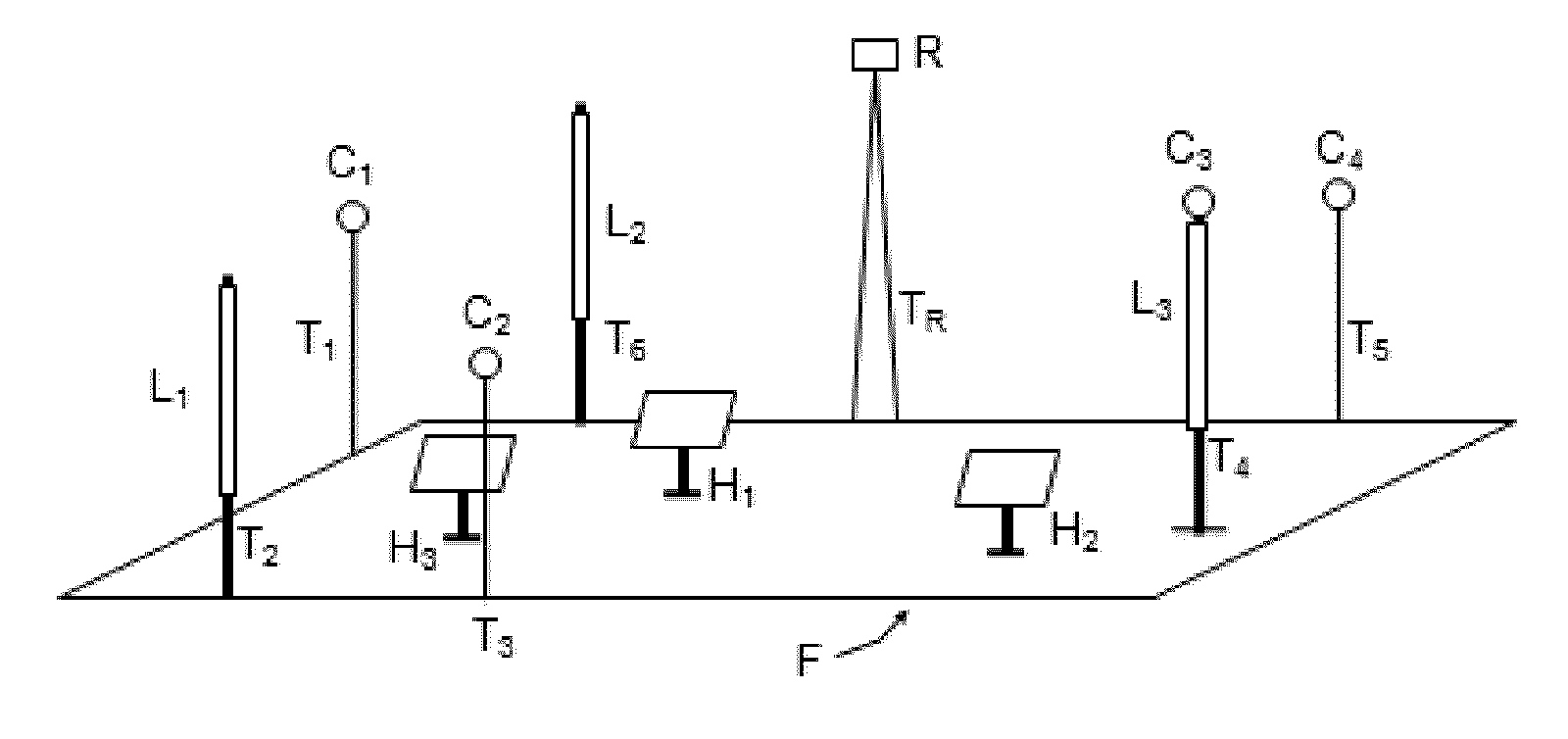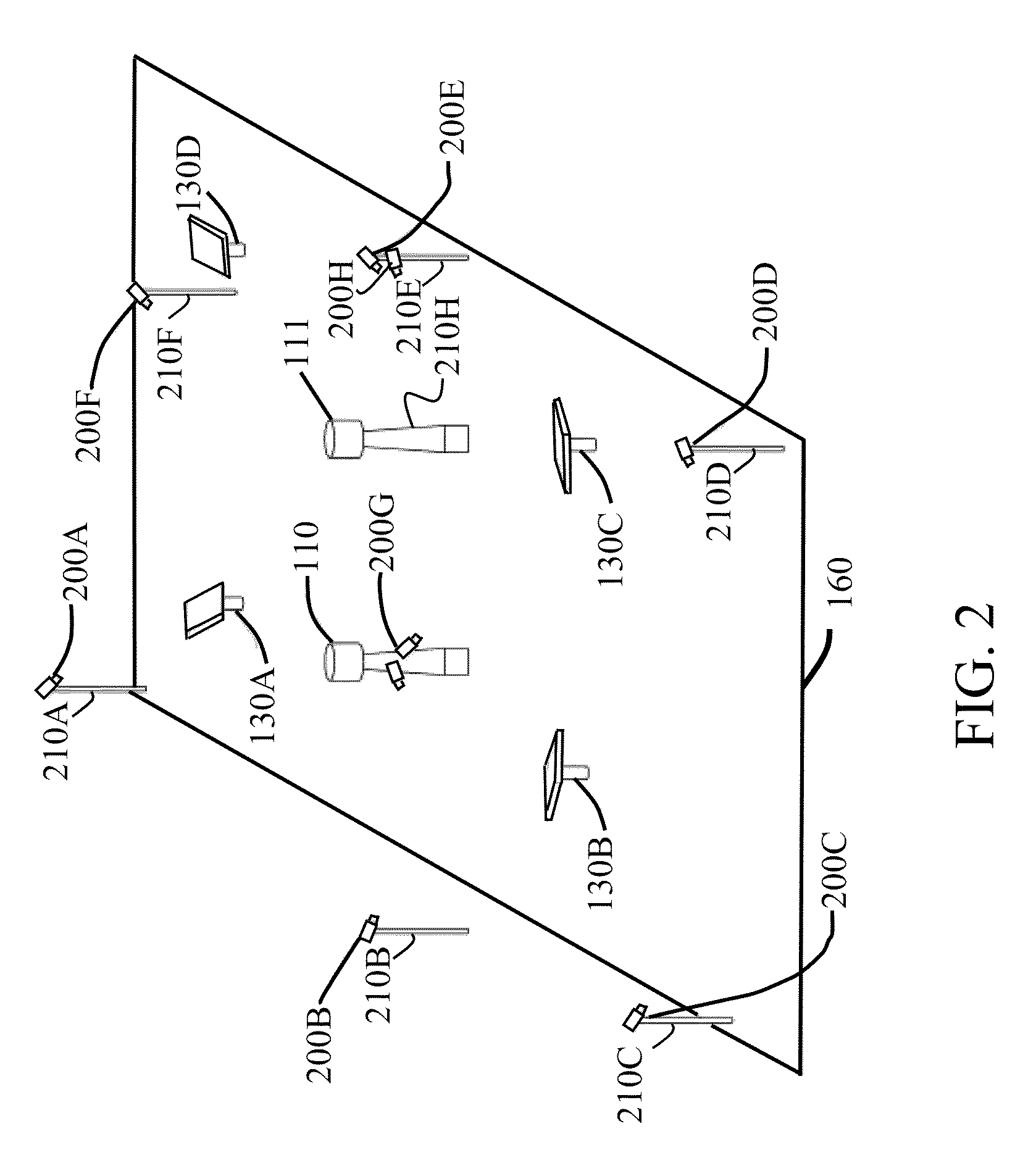Camera-based heliostat calibration with artificial light sources
a technology of artificial light source and heliostat, which is applied in the direction of instruments, instruments for comonautical navigation, optical radiation measurement, etc., can solve the problems of poor nominal estimation of heliostat parameters and delay in the calibration process
- Summary
- Abstract
- Description
- Claims
- Application Information
AI Technical Summary
Benefits of technology
Problems solved by technology
Method used
Image
Examples
Embodiment Construction
[0043]Rather than ground-mounted cameras and target screens, one or more cameras may be mounted atop poles and directed toward the heliostat field. A heliostat which reflects the sun toward a camera can be imaged, under suitable filtering, as a small compact region of the image sensor—a “blob”; non-contiguous heliostats can be imaged simultaneously at non-adjacent regions of the image sensor, and therefore significant parallelism is possible, and in practice it may be limited by the heat-rejection system protecting the camera and / or the proximity of far-away heliostats as they are imaged onto the image sensor. Accordingly, heliostat tracking parameters may be estimated after each heliostat's mirror is oriented so as to produce reflections into all cameras visible to it, e.g., in round robin fashion, and over several sun positions.
[0044]Heliostat calibration refers to estimating the geometric parameters necessary for a heliostat to reflect the sun continuously into a receiver accordi...
PUM
 Login to View More
Login to View More Abstract
Description
Claims
Application Information
 Login to View More
Login to View More - R&D
- Intellectual Property
- Life Sciences
- Materials
- Tech Scout
- Unparalleled Data Quality
- Higher Quality Content
- 60% Fewer Hallucinations
Browse by: Latest US Patents, China's latest patents, Technical Efficacy Thesaurus, Application Domain, Technology Topic, Popular Technical Reports.
© 2025 PatSnap. All rights reserved.Legal|Privacy policy|Modern Slavery Act Transparency Statement|Sitemap|About US| Contact US: help@patsnap.com



